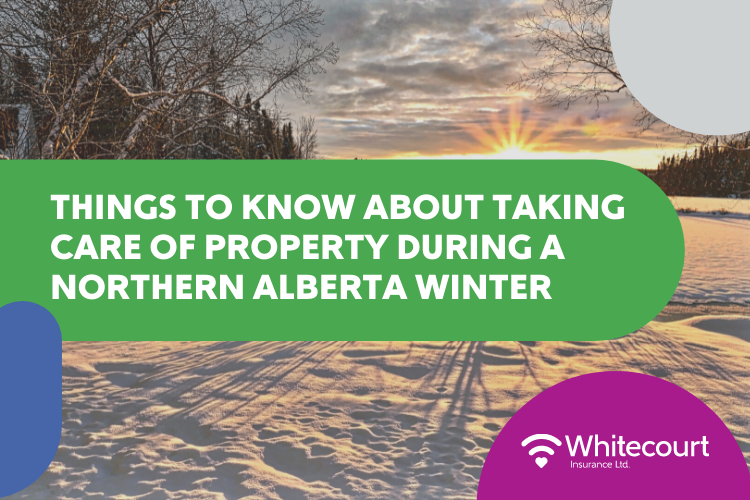Winter can be a wonderful time. But it’s also a time of extreme weather, especially in northern Alberta. Blizzards, accumulated snow, extreme cold, and ice accumulations can threaten your property and the safety of others.
Two main issues property owners and lessees need to make plans for include managing the snow on roofs and snow removal from parking lots, sidewalks, emergency exits, stairs, and doorways.
Creating a good plan is key to staying on top of these common winter risks. First, let’s discuss the snow management of roofs.
Snow-Covered Roofs
Northern roofs are built to withstand accumulating snow. Even the highest quality roof has its limit, though. The higher the snow builds, the more stress it puts on the structure and roof covering. This can lead to damages to the structure.
Ice dams are also a potential result of snow piles on the roof. When blocked by an ice dam, your roof no longer receives the proper drainage, threatening the roof covering and risking water infiltration.
Ideally, snow and ice should be removed from a roof after exceeding a thickness of 20 cm or 8 inches.
The Risk of Removing Snow
Snow removal is important to keep your roof and the structure of your property safe. However, the removal of snow and ice from a roof comes with its own risks.
In many cases, it may be best to call a qualified snow and ice removal professional. These pros know the right techniques and have the right equipment to complete the job safely and easily. Tip: Don’t forget to ask the contractor to provide proof of insurance coverage.
Removing It Yourself
If you choose to remove the snow and ice yourself – or intend to have an employee or worker complete the task – keep in mind the following safety tips:
- Recognize the hazards. Assess whether the hazards can be eliminated, limited, or controlled.
- Mark a safe perimeter while removing the snow. This area aims to help keep pedestrians or anyone outside the building safe.
- Know where the electrical installations are.
- Plastic or wood shovels are recommended for removing snow and ice. Make sure you stop well before you hit the roof covering (about 10 cm or 4 inches before this happens).
- Don’t use sharp tools. Rubber mallets are best to use to break up the ice.
- Where possible, avoid excessive heat (welding torches, etc.). These can damage the roofing structure.
Parking Lots, Sidewalks, Emergency Exits, Stairs, and Doors
Icy sidewalks are dangerous. It’s important to reduce these risks of slip-and-fall injuries. The best way to manage these surfaces and areas is to implement a well-documented winter maintenance program.
Most property owners use one of two solutions for snow and ice removal in these areas: either they hire a contractor or have an employee or worker clear the areas.
Hiring A Contractor:
A written contract or service agreement is key in this situation. This document should clearly outline the work to be done. It should also outline each party’s roles and responsibilities.
Make sure the hired company has a certificate of insurance. Review this document with your broker to make sure the contractor has the right legal liability.
The contract needs to be detailed, even about the specific products the contractor will use and in what conditions they are required to use them. Salt, sand, and other products need to be clearly outlined.
Tip: It’s always best to have a lawyer review this contract. They can determine if you need to add more information and can point out if anything is missing.
Using An Employee or Worker to Remove the Ice & Snow:
Again, clarity is key. The employee’s tasks need to be outlined in detail. Describe which areas need to be kept up, how often they’re required to clear them, and what equipment, products, and materials they are to use.
Include a clear description of which areas need to be cleared first as well. Any sort of entrance and exit needs to come first, along with any stairways. They should be cleared before employees, staff, or visitors come to the property.
Once you’ve outlined what your employee needs to do, make sure they document when they do it. Set this person up with a log and ensure they understand the importance of filling it out thoroughly and consistently.
This log should be as exhaustive as possible, to ensure you have as much information as possible.
Keep Your Property Safe for Everyone
Take time this winter to make a plan to ensure you have the best coping strategies for the cold northern climate. If you have questions about how these winter months impact your insurance, contact one of our brokers today.

